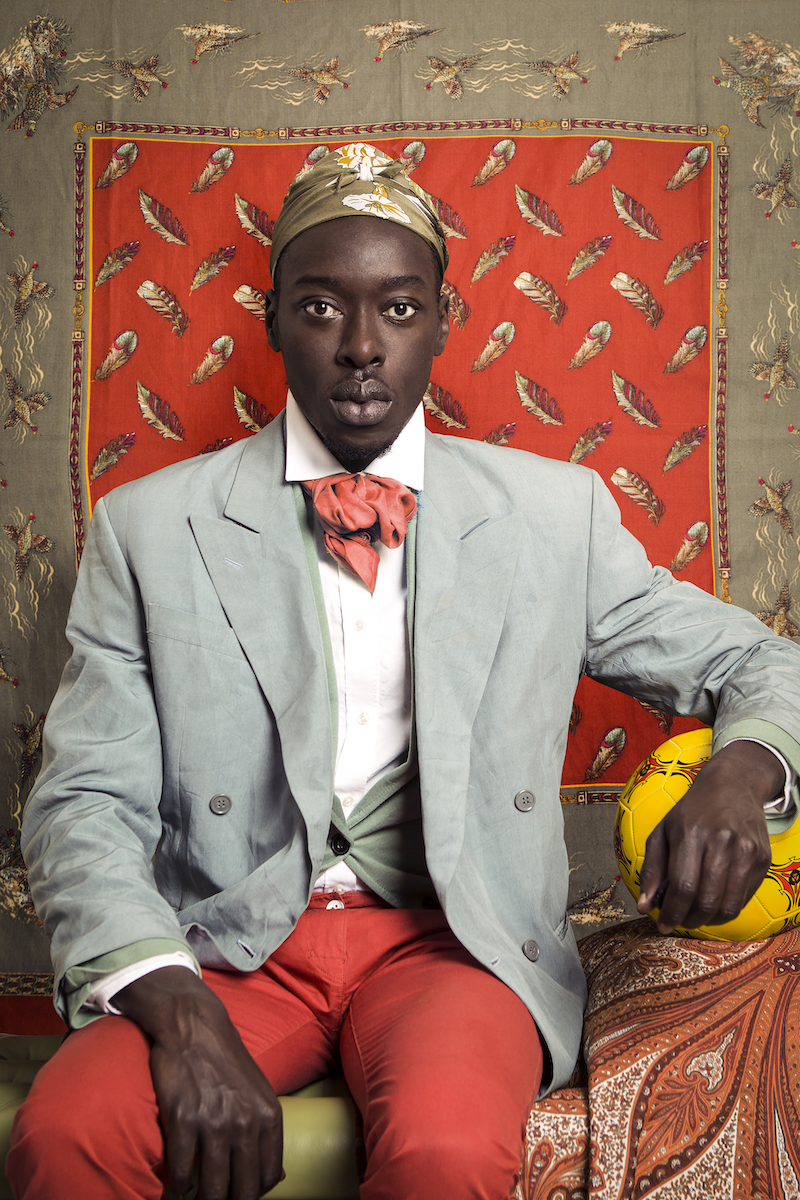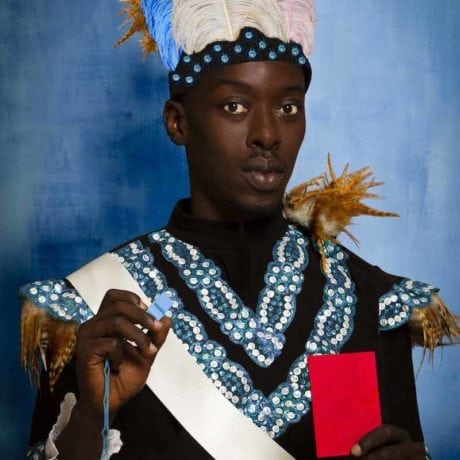
The striking portraits in Omar Victor Diop’s 2014 Project Diaspora series have travelled to fairs and festivals in Arles and Evora, London and Lagos. The forgotten historical figures of the fifteenth and nineteenth century the images depict refer to The Image of the Black in Western Art, four books on the representation of Africans in art over a period of five thousand years, originally published in the 1960s by Dominique de Menil, as an act of resistance. The epic research, though later criticized for focusing on objectification rather than self-representation (resulting in a reframed fifth volume on the twentieth century) directly inspired Diop’s series, which restages some of the paintings.
Although the artist appears in the photographs, he does not consider Diaspora Project a self-portrait series—but the people he performs do connect with Diop’s perspective and experience as a middle class, urban man from Dakar, the son of an accountant and a lawyer. Diop also worked in the corporate world until 2012, when he submitted work to the international photography festival, Rencontres de Bamako, on a whim and was selected. Yet in the art world abroad, he has said, he has often been treated as an “exotic other”, in parallel to some of the men from the past he portrays.
The twelve figures Diop selected from The Image of the Black for Diaspora Project all represent stories of black power and resistance from different countries and eras, a way to challenge the monolithic history of Africa. Diop’s heros are emissaries, princes, writers and painters. They protested against slavery and colonialism. Some were given to European royalty as children, such as August Sabac el Cher, who was sent to Prince Albert of Prussia, and was embraced as Prussian, marrying a white woman in the late 1800s.
“How do you redefine the notion of Africanness if you walk away from it?”
There is a portrait of the Senegalese scholar and writer, Omar Ibn Saïd, who was captured and enslaved in 1807, and transported across the Atlantic to the US. He escaped one master but was later recaptured and enslaved again. He was sold to an American politician, James Owen, and remained a slave until he died in his mid-nineties. He left behind fourteen manuscripts, written in Arabic, including an autobiographical account. When Diop inhabits Saïd’s image, he embodies an educated, erudite, empowered man, not a victim of slavery. He does not shy away from the exotic, but embraces it, from the ornately printed silk backdrop to the colourful headscarf he wears. “How do you redefine the notion of Africanness if you walk away from it?” Diop has said. “It has to be done from within.”
Project Diaspora also addresses the canon of twentieth-century Western African studio photography, in which confidence is key. This is the mood Diop picks up on in his performative pictures, and the understanding of pose, pattern and composition that is indebted to the popularity of the likes of the late greats of the genre: Hamidou Maiga, Malick Sidibé and Seydou Keïta, but rendered for the twenty-first century, in astonishing full colour. Like Maiga, Sidibé and Keïta, Diop uses the camera to explore masculinity, as a black African, and the importance of style, clothes, props and posture in projecting that identity. Diop’s work is perhaps, in the current context, more self-conscious, and unlike the first wave of studio photographers who took pictures primarily for locals, his were staged with an international viewer also in mind, whether online or at galleries in the former colonial capitals.
Project Diaspora is also distinct from its predecessors in that it speaks to, and of, a generation born in an already independent Africa (Senegal gained independence from France in 1960, twenty years before Diop was born). You might notice an unusual, anachronistic detail, added by Diop, in his reimagining of Saïd. The unmistakable yellow football is Diop’s analogy, relating the exoticization of these impressive figures in the past to the treatment of star African footballers in the Premier League.






